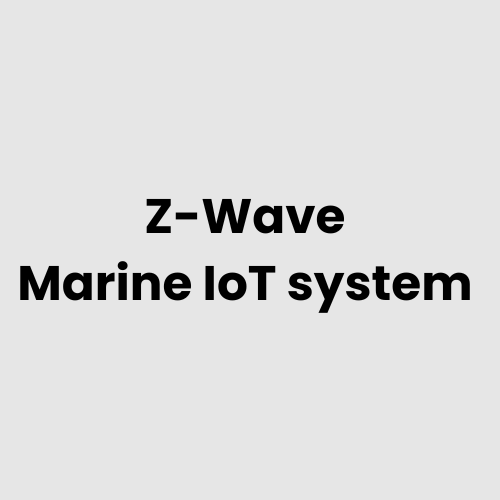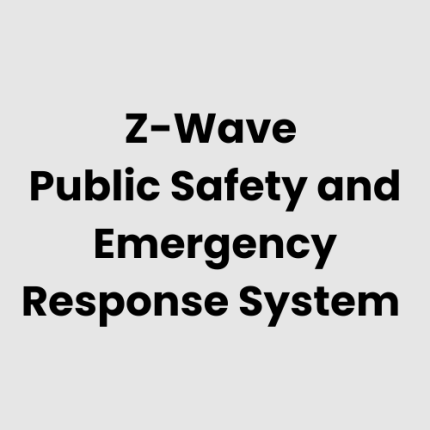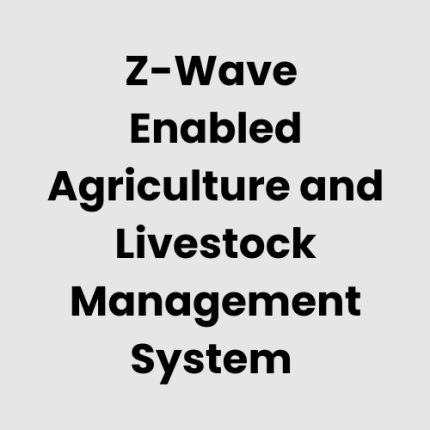Description
Technical Architecture
GAO Tek’s Z-Wave Enabled Marine IoT Systems are designed for robust and scalable monitoring of marine environments. The architecture includes Z-Wave-enabled sensors, controllers, and gateways for collecting and transmitting data. A central processing unit processes this data locally or in the cloud. Real-time analytics and control functions are accessible through secure web or mobile interfaces, enhancing marine operations efficiency.
Hardware List
- Z-Wave Sensors: For water quality, pressure, temperature, salinity, and flow monitoring.
- Z-Wave Gateways: To connect local devices to cloud services.
- Controllers: For processing and managing sensor data.
- Marine-Grade Batteries: To power devices in remote locations.
- Signal Boosters: Ensuring long-range Z-Wave communication.
- GPS Modules: For precise location tracking.
- Durable Enclosures: For hardware protection in harsh marine conditions.
- Edge Devices: For preprocessing data before cloud transmission.
Physical Placement Considerations
- Underwater Sensors: Installed at varying depths to monitor water conditions.
- Surface-Level Devices: Placed on buoys or platforms for weather and wave monitoring.
- Shoreline Equipment: Positioned on piers or lighthouses for extended communication and control.
- Offshore Deployments: Use of corrosion-resistant materials and secure mounts to withstand marine conditions.
Hardware Architecture
The hardware architecture integrates Z-Wave sensors with edge computing devices for data preprocessing. Gateways ensure seamless data relay to local servers or cloud infrastructure. The modular design enables expansion and flexibility, with redundant systems for reliability in critical applications. GAO Tek leverages robust marine-grade components to maintain performance in extreme environmental conditions.
Deployment Considerations
- Connectivity: Ensure reliable Z-Wave signal transmission in dynamic marine environments.
- Power Supply: Use solar-powered or long-lasting marine-grade batteries for remote deployments.
- Redundancy: Include backup communication channels for critical applications.
- Environmental Factors: Protect hardware against saltwater corrosion and extreme weather.
- Data Security: Implement encryption protocols to safeguard sensitive marine data.
Relevant Industry Standards and Regulations
- ISO 13628-6
- IEC 61162
- IMO ECDIS Standards
- IEEE 802.15.4 (for low-power wireless communications)
- Environmental Protection Agency (EPA) regulations
- International Maritime Organization (IMO) guidelines
Local Server Version
GAO Tek offers a local server version of the Z-Wave Enabled Marine IoT Systems for deployments requiring on-site data processing. This setup reduces latency and ensures real-time decision-making capabilities, even in remote locations with limited internet access. The local server includes a robust database and analytics engine to manage and process large datasets.
Cloud Integration and Data Management
GAO Tek’s Z-Wave Enabled Marine IoT Systems support seamless cloud integration for real-time data visualization, storage, and analytics. Data from sensors is encrypted and transmitted securely to cloud platforms. Advanced AI algorithms provide predictive analytics and trend insights, aiding in proactive decision-making. The cloud-based system ensures scalability for global marine operations, with intuitive dashboards for monitoring and reporting.
GAO Tek, headquartered in New York City and Toronto, excels in deploying cutting-edge marine IoT solutions, offering unparalleled reliability, security, and efficiency.
GAO Case Studies
United States
- San Francisco, California
In San Francisco Bay, Z-Wave-enabled marine IoT sensors monitor water quality and tidal patterns. These devices help ensure compliance with environmental regulations while optimizing port operations. GAO Tek’s systems deliver reliable, real-time data for effective decision-making.
- Seattle, Washington
Z-Wave technology is used to track the salinity and temperature of coastal waters in Seattle, supporting marine conservation efforts. The system’s scalability has enhanced regional environmental monitoring initiatives.
- Miami, Florida
In Miami, IoT sensors manage flood forecasting and ocean temperature monitoring. GAO Tek provided robust Z-Wave solutions for resilient operations during hurricanes.
- New Orleans, Louisiana
Deployments in New Orleans utilize Z-Wave IoT systems to monitor river deltas and prevent erosion. These systems provide critical data to safeguard infrastructure in high-risk zones.
- Boston, Massachusetts
Boston Harbor employs Z-Wave IoT technology to enhance port efficiency and track marine vessel movements. Data is securely stored and analyzed through cloud integration.
- Houston, Texas
In Houston’s Gulf Coast, Z-Wave sensors monitor offshore drilling activities. These systems ensure environmental compliance and optimize resource extraction.
- San Diego, California
San Diego’s marine IoT system uses Z-Wave technology to track fish migration and protect local ecosystems. GAO Tek supported the deployment with tailored, eco-friendly solutions.
- Norfolk, Virginia
In Norfolk, IoT devices enhance the management of naval operations by monitoring underwater currents and temperatures. The Z-Wave system integrates seamlessly with existing infrastructure.
- Anchorage, Alaska
Anchorage uses Z-Wave-enabled IoT systems to monitor ice movements and ensure the safety of shipping lanes. GAO Tek delivered reliable hardware for extreme cold conditions.
- Portland, Maine
Maine’s coastal areas benefit from Z-Wave sensors tracking ocean acidity, supporting local fisheries in adapting to environmental changes.
- Chicago, Illinois
Lake Michigan near Chicago employs Z-Wave IoT systems for monitoring water levels and controlling waste management systems, enhancing sustainability.
- Key West, Florida
Key West leverages Z-Wave technology to monitor coral reef health. GAO Tek’s solutions provide vital data for preserving marine biodiversity.
- Los Angeles, California
The Port of Los Angeles uses Z-Wave IoT systems for real-time air and water quality monitoring, reducing environmental impact from industrial activities.
- Savannah, Georgia
Z-Wave sensors deployed in Savannah support flood management and coastal resilience efforts. GAO Tek offers on-site technical support for optimal performance.
- Honolulu, Hawaii
In Hawaii, IoT systems track ocean wave patterns to enhance tsunami prediction and response strategies. Z-Wave’s reliability has proven crucial in emergencies.
Canada
- Vancouver, British Columbia
In Vancouver, Z-Wave IoT systems monitor marine biodiversity and water quality in Burrard Inlet. GAO Tek’s durable devices withstand the challenges of coastal weather conditions.
- Halifax, Nova Scotia
Halifax employs Z-Wave-enabled IoT systems to oversee shipping activities and monitor sediment deposits in the harbor. The system provides actionable insights for sustainable maritime operations.
Navigation Menu for Z-Wave
- Z- Wave Gateways/Hubs
- Z-Wave End Devices
- Z-Wave-Cloud, Server, PC& Mobile System
- Z-Wave Accessories
- Z-Wave Resources
Navigation Menu for IoT
Our products are in stock and can be shipped anywhere in the continental U.S. or Canada from our local warehouse. For any further information, please fill out this form or email us.
We are actively looking for partners who are like us located in the U.S. and Canada. For more information on partnering with GAO, please visit Partner with GAO Tek Inc. It lists various ways to partner with GAO, such as OEM Partnerships, Technology Integration, Distribution and Reselling Opportunities, Presenting at the Leading Event Tek Summit, Joint R&D Projects, Training and Consulting Services, Industry-Specific Collaborations, Research and Academic Partnerships.



